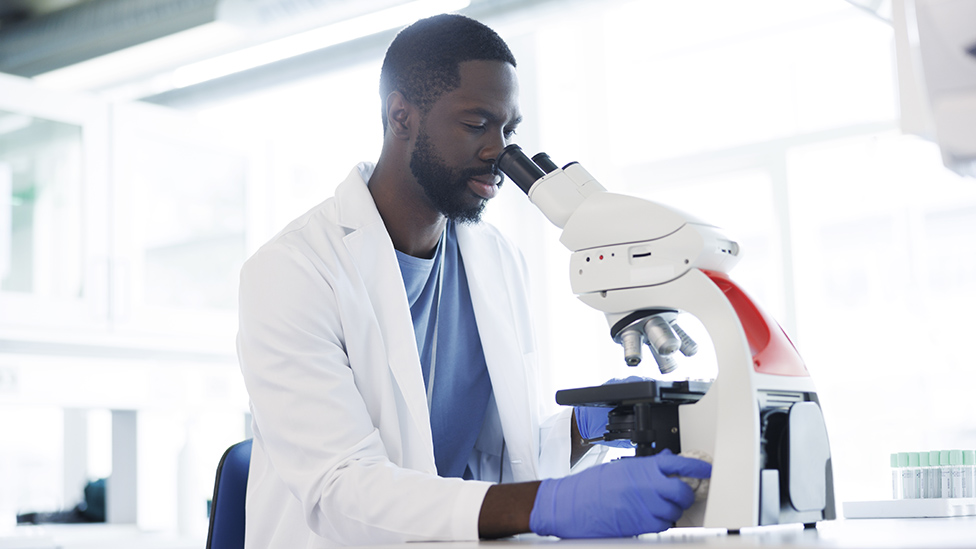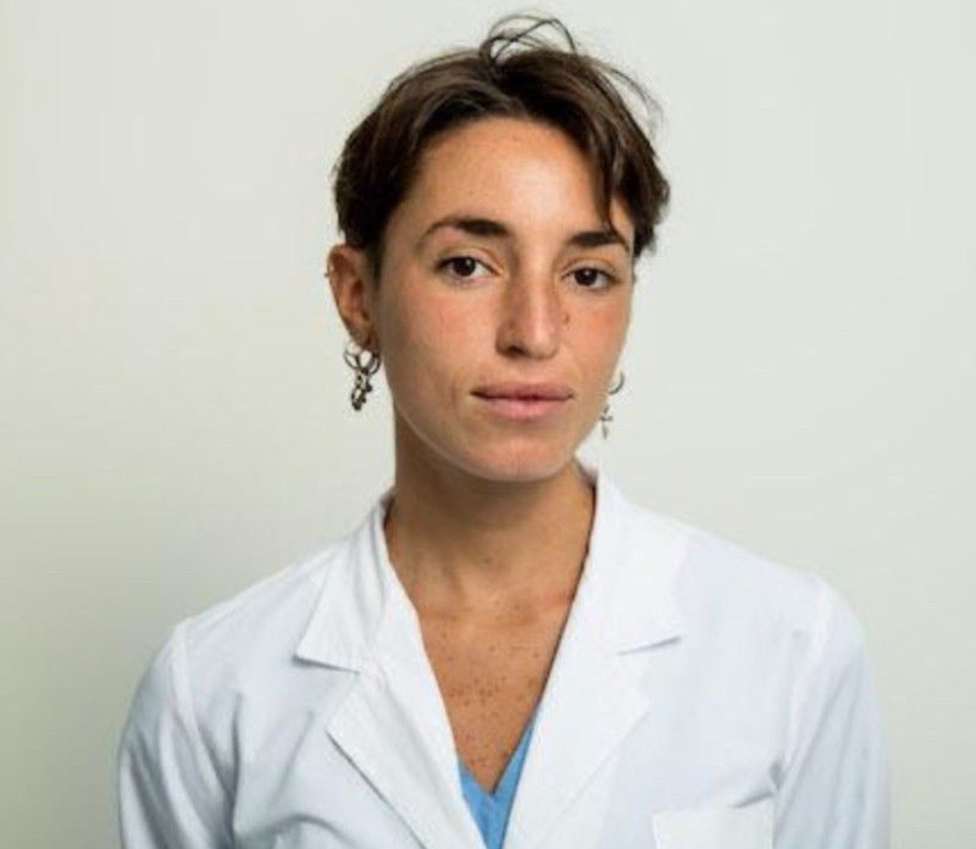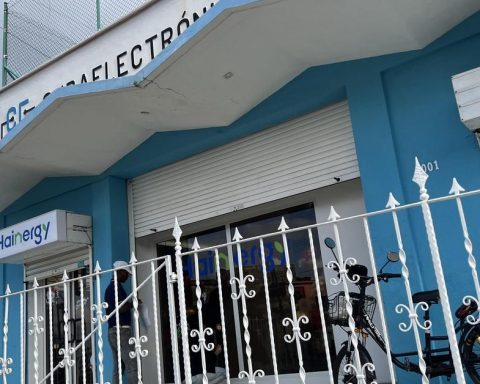May 1, 2023, 8:56 AM
May 1, 2023, 8:56 AM
In 1978, the year the world’s first “test-tube baby” was born, human reproduction experts agreed to a rule that stuck around the world: They banned the cultivation of human embryos. in vitro beyond 14 days.
The goal was to put an ethical limit on the growing field of embryo research, and in some countries, that two-week threshold was even enshrined in law.
But why 14 days?
The reason is that at the end of the second week of pregnancy, a complicated process begins that many consider the most fundamental of our creation: gastrulationduring which the foundations that will form all the organs and tissues of our body are laid.
This stage is what defines how we will be physically and what makes us individual and unrepeatable beings, since when the so-called primitive streak is formed -beginning the gastrulation process- the embryo can no longer divide to form twins.
This period, between the third and fourth week of pregnancy, is not only the most important for make us be us, by transforming us from a group of cells to an individual organism, but it is also the most delicate part of pregnancy.
Many miscarriages happen at this time and also many of the Congenital malformations that will cause us health problems for life.
That is why one of the most prominent embryologists in history, the British Lewis Wolpert, who died in 2021, assured that “it is not birth, marriage or death, but gastrulation that truly it is the most important moment of your life“.
a riddle
Despite its relevance, this stage between the 14 and 28 days of gestation is still considered the black box of human developmentbecause it is the only one that scientists have not been able to study in their laboratories.
Technological advances have made it possible to observe embryos created in vitro during the first two weeks of gestation.
And the experts have also managed to reconstruct what happens after 28 days, thanks to the analysis of tissues from embryos that were aborted, either naturally or voluntarily, and donated to science.

But, as the Argentine embryologist explains congratulations Azpiroza researcher from the Spanish group Eugin, dedicated to reproductive science, there has been almost no access to embryos that are less than a month old.
For this reason, until now it has not been possible to investigate the mysterious mechanism of human gastrulation, which occurs when the small group of cells that form the two-week-old embryo regroup to form three germ layers that contain the stem cells that will form our body, from our heart and nervous system to our nails and hair.
Scientists have not only been limited by the 14-day rule, which does not allow them to see what happens to the embryo as it enters the third week of gestation.
It also happens that, until recently, technological capabilities did not allow them to develop a human embryo for so long. But scientific advances, especially in the field of stem cell research, meant that this last limitation is no longer insurmountable.
For this reason, in May 2021, an international panel of experts decided that it was time to extend that period, opening the doors to the possibility of being able to study what happens during the enigmatic gastrulation.
The International Society for Stem Cell Research (ISSCR) defined that, under certain strict conditions, the development of an embryo beyond two weeks can be justified, but recommended that each country conduct its own discussion. about whether this type of experiment should be allowed.

“This is not a green light for groups to go ahead with extending human cultures beyond 14 days,” said Cambridge University biologist Kathy Niakan, one of the experts who worked on the new guidelines.
“It would be irresponsible, and in many jurisdictions it would be illegal. do it. Instead, these guidelines are a call to proactively engage in a two-way dialogue with the public to revise the 14-day limit on human embryo culture,” he noted.
For his part, developmental biologist Robin Lovell-Badge of the Francis Crick Institute, who chaired the ISSCR panel of scientists, said that if the gastrulation process could be studied, it might be possible to understand why one in four pregnancies does not prosper.
“If we could understand what’s wrong, we might be able to prevent miscarriages and malformations,” he said.
in animals
Until recently, scientists have only been able to study gastrulation by analyzing tissue from animal embryos.
In 2019 the Spanish scientist Juan Carlos Izpisúa carried out a controversial experiment in a Chinese laboratory in which he injected human stem cells into 132 monkey embryos.

Three of the hybrid embryos managed to grow for 19 days. in vitro before being destroyed, according to the details of the study that was published in 2021 in the scientific journal Cell.
The presumed aim of Izpisúa and his team was to explore whether it will be possible to grow human organs in animal hosts in the future, but it also served to show that the 14-day barrier can be overcome.
This was finally demonstrated in August 2022 when two different groups of scientists, one in Israel and one in the UK, finally achieved the goal that had been sought for years and managed to develop artificial mouse embryos, created from stem cells, that completed the gastrulation stage.
Jacob Hanna, from the Weizmann Institute of Science, and Magdalena Zernicka-Goetz, from the University of Cambridge, led both studies, which were published in Cell and Nature, respectively.
In both cases the pseudo-embryos developed for about eight days – which represents a third of the gestation period of a mouse – and eventually formed beating hearts and the bases of a brain.
In April this year, Chinese scientists at the Shanghai Institute of Neurosciences published another milestone in the Cell Stem Cell journal: they generated pseudoembryos but from monkeys -whose development resembles humans more than mice- and managed to make some of these macaque blastoids (when the embryo has more than 200 cells) will last 18 days in vitro, undergoing gastrulation.
pseudoembryos
In the last three years, some have found novel ways to study the phenomenon in humans, without going into the moral dilemmas involved in developing viable embryos in a laboratory.
The more advanced ones involve the creation of what is known as pseudoembryos or embryoidswhich are sets of human embryonic cells developed from stem cells.
Though they are created without an egg and a spermgrow in a similar way to human embryos, following the general rules of development of our species.
In 2020, researchers from the University of Cambridge in the United Kingdom, led by the Spaniard Alfonso Martínez Arias, managed to develop pseudoembryos from embryonic stem cells that imitated the essential characteristics of an embryo between 18 and 21 days.
They were nicknamed “gastruloids”, since they replicated an embryo in the gastrulation stage.
These gastruloids did not have the potential to develop into a fully formed embryo because they did not have brain cells or any of the tissues necessary for implantation in the uterus but, although they only developed for a few days, they opened a window to observe a phenomenon that until that time time had remained hidden.
“Our work allows study ethically this important phase of human development“Martínez Arias pointed out about the research that was published in the scientific journal Nature.
The expert added that this scientific advance opened for the first time “the possibility of analyzing the moment in which many pathologies originate.”
A step ahead
Since then, even more advanced ways of creating synthetic embryos have been found that could one day be used to see stealthy gastrulation in action.
In 2021, a team from Monash University in Australia, led by Argentine biochemist José Polo, managed to create human pseudoembryos no longer from embryonic stem cells but from using stem cells from adult skin that were reprogrammed to return to an embryonic state.
However, other scientists have gone further, leading to the question where the limit that separates a pseudo-embryo from a real embryo ends.
A team led by French biologist Nicolas Rivron at the Institute for Molecular Biotechnology in Vienna created synthetic blastocysts (dubbed “blastoids”) from adult stem cells.
At the end of 2021 they managed to implement them successfully in endometrial cells also cultured in vitro.

But, although for now human embryoids have not completed gastrulation, Azpiroz points out that, if the currently allowed deadlines for their development were extended, “in the future they could be one more step to untangle this complex process“.
Azpiroz warns that in all these experiments -both in humans and in animals- the pseudo-embryos that were created did not have the same characteristics and capacities as a real embryo, and did not manage to develop for more than a few days. But he points out that the potential is huge.
“Everything opens the door for us a little more so that tomorrow this can be done with humans,” he says.
Although today we are still far away, if science continues to advance, he says, we could not only potentially create artificial human embryos that complete gastrulation, to finally be able to peek inside that black box of development.
We could also reach limits that today They are only possible in science fiction.
“Can we clone a human or create organs? Everything is tending towards that,” concludes the expert.
Remember that you can receive notifications from BBC News World. Download the new version of our app and activate them so you don’t miss out on our best content.


















